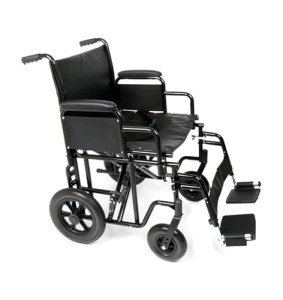bariatric wheelchair weight limit - 26 Inch Seat
Bariatric wheelchairs are wider than standard wheelchairs and can support a higher weight capacity. They are utilized to assist individuals with medical conditions that affect their mobility and for those who are obese. This strong wheelchair has a silver metallic sturdy slide tube frame and detachable swing away extra-large foot plates with tool-free raising cushioned leg rests.
Frame
The frame of a bariatric wheelchair is developed to be durable adequate to support the extra weight of bigger users. The frame can be made from steel, aluminum or titanium depending on the weight capacity of the chair. The frame can likewise be a rigid or a folding style. Folding frames are the most typical as they make it easy to transport and keep the chair when not in use.
Rigid frames have the benefit of not bending when the wheelchair is being propelled so they are usually easier to maneuver than chairs with a folding frame. The frame can be fixed or adjustable for various seat widths and may have a double cross brace to include strength and stability.
Wheelchairs with a sturdy frame and a wide seat can be challenging to steer in tight spaces. If the seat is too large it can be difficult for the user to reach the hand rims of the wheelchair to propel it and it may also be harder to steer the chair in little areas like narrow corridors or doorways. Wheelchairs with a wide seat can likewise require more area in the lorry to be securely carried in the trunk.
Seat
Usually, bariatric wheelchairs are broader than standard wheelchairs and are used to support individuals that are at danger of pressure ulcers due to obesity or other medical conditions. These wheelchairs have a seat that is designed to be resilient and extra wide to ensure the user has good posture while being in the chair. The best method to figure out the right width of wheelchair seat for a user is to have them sit normally on the ground with a yardstick or measuring tape put across their lap at the widest part which is normally around the hips. Include 2 inches to this measurement to enable the using of winter season coats.
Footrest

The footrest of a bariatric wheelchair needs to be extremely strong in order to take the additional weight of bigger users. The best method to identify the correct width is for the user to rest on a solid surface area and have their largest part of their thighs determined. This need to be done across their lap and preferably with a yardstick rather than a tape step as this offers a more precise measurement. Our range of durable bariatric wheelchairs consists of reclining designs with tool-free raising leg rests that are angle adjustable. They can be decreased to hemi-level or totally elevated and can also be removed entirely if the user no longer requires them.
